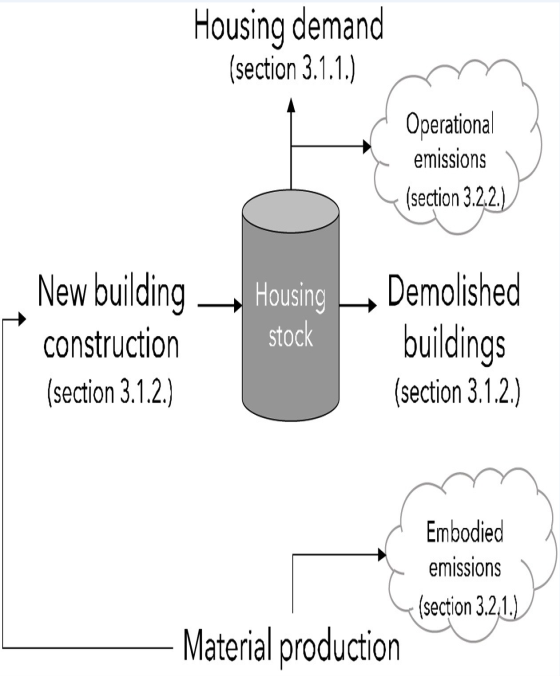Testing the greenhouse gas emissions reduction potential of alternative strategies for the English housing stock
By Cabrera Serrenho, M. Drewniock, C. Dunant , J. Allwood
Buildings account for around a third of global energy and process emissions, but have been delivering much smaller emissions savings than other sectors. There is need for a clear prioritisation of policy options capable of delivering the greatest reduction in emissions at minimal costs. requiring an assessment of the trade-offs between new construction and retrofitting. In this paper, a dynamic material flow analysis is used to explore the impact of combined mitigation strategies on new and existing buildings capable of reducing embodied and operational emissions in the English domestic housing stock. Results show that progress in the use of low carbon materials in construction and the deployment of zero-carbon buildings at scale would not be enough to deliver a reduction of building emissions of the scale required nationally). Improvement in building standards for both new and pre-existing construction is essential to meet targets, but its costs are likely to be unreasonable without a reduction in the demand for floor area per capita by promoting flexible design of buildings, house sharing or telecommuting, which are likely to produce far-reaching implications in social organisation and urban planning.
This article is available online at: https://doi.org/10.1016/j.resconrec.2019.02.001

